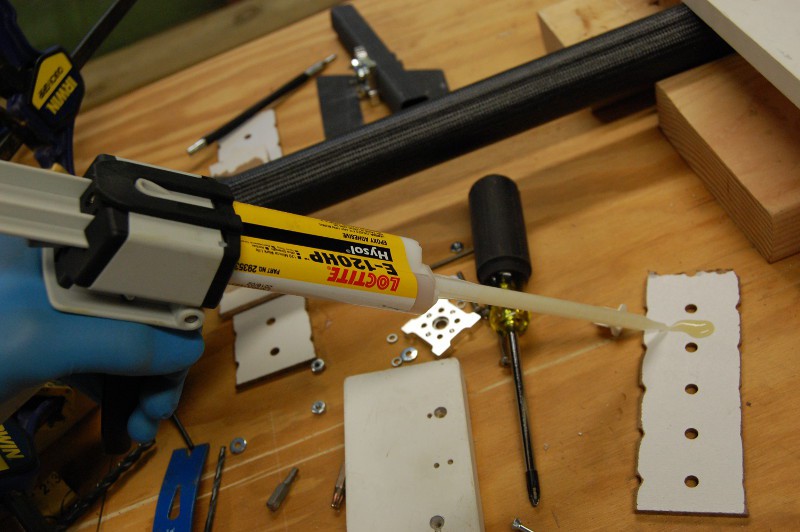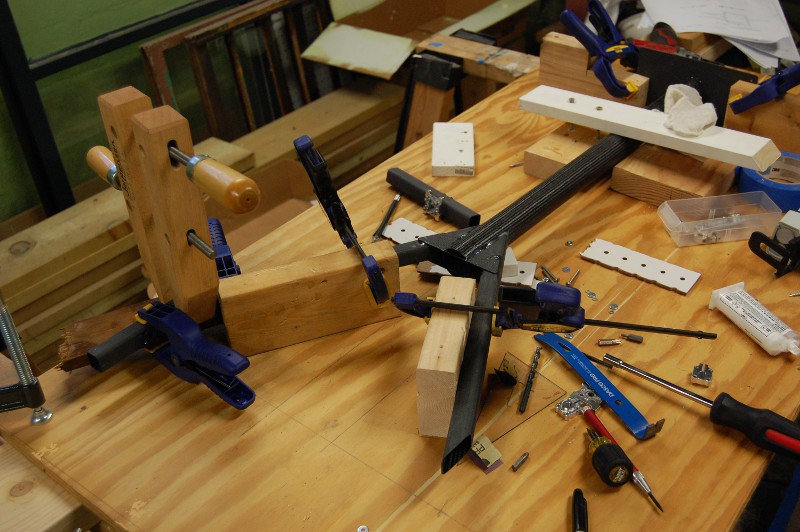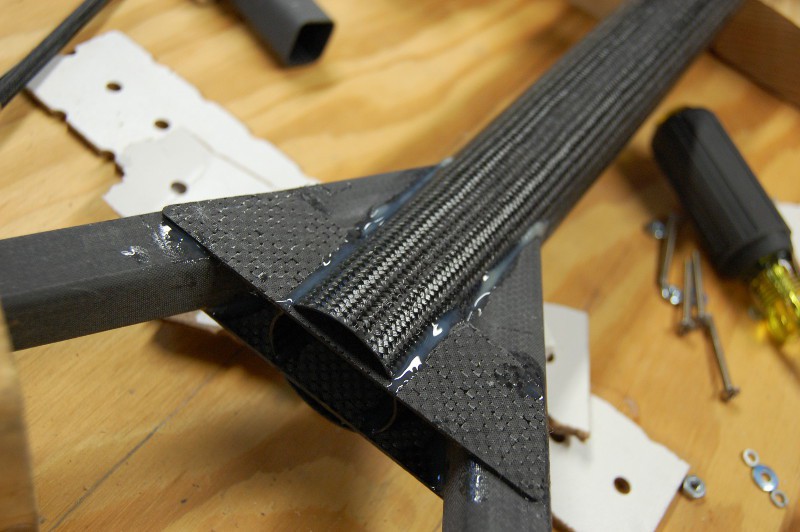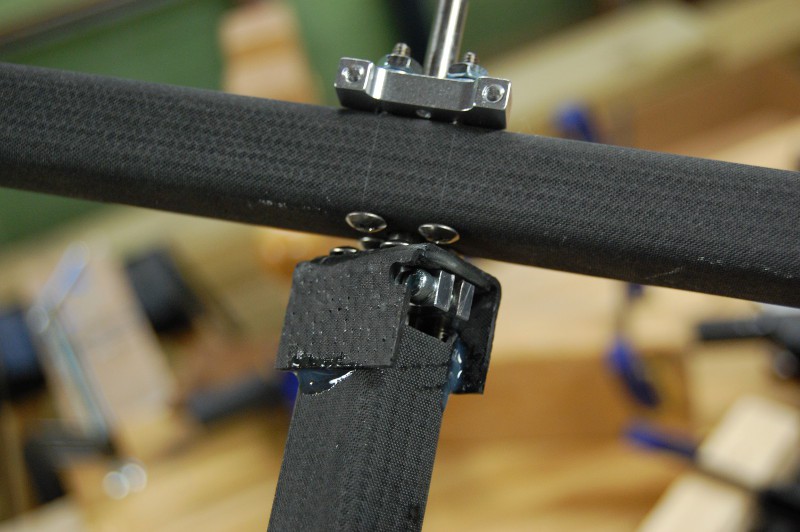Not a huge update here; the extra square CFRP tube stock arrived this afternoon, so I cut the last piece of the frame. I also got my hands on a set of cheap diamond-tipped 1/8" high speed tools which made short work of the holes. Time for more Space Glue!
Space Glue, as I mentioned in the last post, has a long mixing nozzle. The instructions suggest blobbing out a bit to make sure it's mixed well:
I reused the jig from last time but added a few modifications to bring the level of the tube up to the right height for the battery tray. The angle bracket reinforcements, to be added at a later gluing step, will provide most of that joint's strength; right now I'm just tacking it in place so it stays put:
While I have prepared both lower square tube sections, I only glued one on at this point; I want to make sure I get the alignment of the second one right, so I'm going to hold off until everything else is set up:
This joint was a bit tougher to glue than expected. Not because of alignment, but because the glue kept spilling out; it seems that sliding joints aren't the best for epoxy. I pulled the gusset back a few millimeters to force more glue in the joint, so it should be fine strength-wise:
After a few finishing touches with the grinding tools, I also glued the shaft coupling holders onto the motor mount. It's a bit funny--I went to a lot of trouble to make the couplings removable for some reason (presumably so I could shim them into alignment if necessary), and the sliding glue joint forced enough epoxy onto the aluminum parts that they're probably not moving any time soon. Oh well; with the screws all tightened down, I was able to spin the motor mount freely in the pitch ring with minimal resistance. That felt good:
A few electrical goodies arrived today--a large LiPo battery (3S/5000mA), a low battery buzzer (it was $2 or so, seems like good insurance), and an assortment of silicone insulated wire. That means once the frame is glued up, I can put everything together and run some static thrust tests!
 zakqwy
zakqwy




Discussions
Become a Hackaday.io Member
Create an account to leave a comment. Already have an account? Log In.